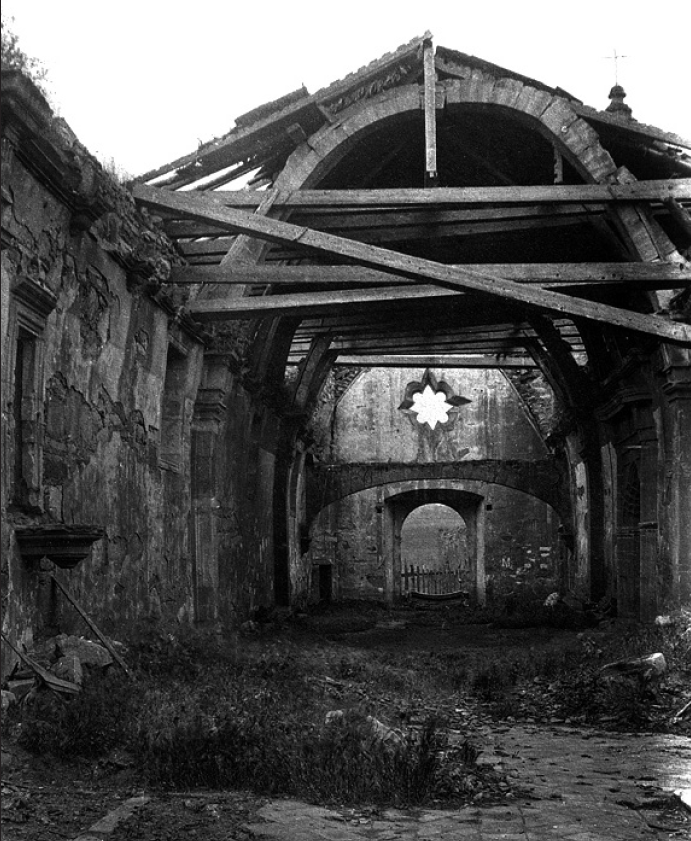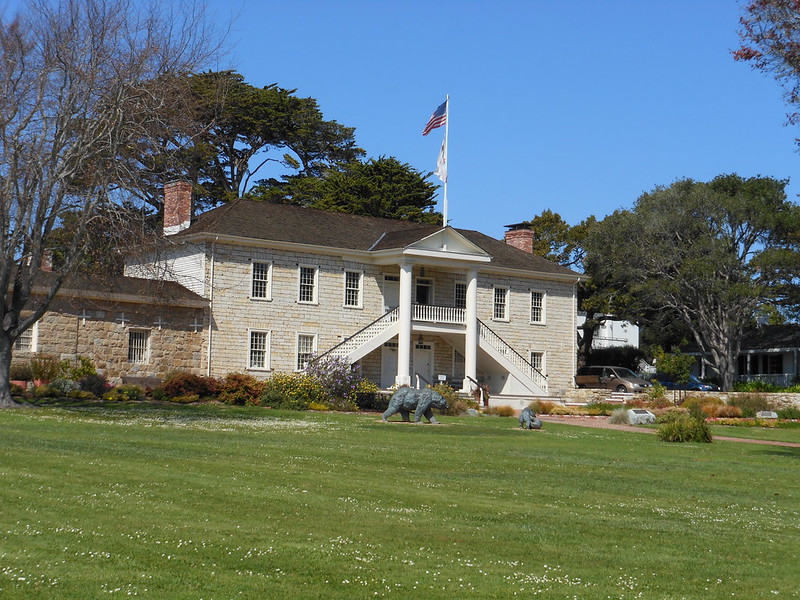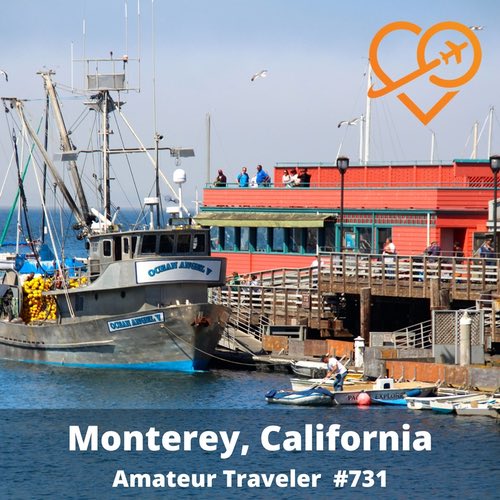The Monterey Peninsula, including the cities of Monterey, Carmel, and Pacific Grove, boasts a history as captivating and diverse as the landscapes that define this picturesque region. From its earliest Native American inhabitants to its Spanish and Mexican influences, and later becoming a vital part of the United States, the history of the Monterey Peninsula is a rich tapestry of cultures and events.
In this blog post, we’ll take a journey through time by highlighting significant dates in the history of this beloved California locale and where you can connect to that part of the area’s history.

Point Lobos State Reserve (Carmel)
Native Americans on the Monterey Peninsula
Long before European explorers arrived, the Monterey Peninsula was home to native tribes.
The Ohlone were Native Americans who inhabited Central California, including the Monterey Peninsula and the San Francisco Bay Area. They lived off the abundant natural resources of the region, relying on hunting, gathering, and fishing to sustain their way of life. While this area was one of the most densely populated regions north of Mexico, estimates that I have read only put the pre-colonial population at around 10,000 people. The Ohlone tribe has lost its tribal status with the U.S. Government but its people are still in the region although in much diminished numbers.
The Esselen people are a Native American group indigenous to the Santa Lucia Mountains to the south of the Big Sur River in California. Before the arrival of Spanish colonizers, the Esselen community followed a seasonal way of life, inhabiting both coastal and inland areas. They relied on the abundant seafood resources during the summer months and transitioned to acorns and wildlife for sustenance throughout the rest of the year.
One good place to learn about the native tribes of California is at the California Museum in Sacramento.
1542: The Bay of Pines
Spanish explorer Juan Rodríguez Cabrillo holds the distinction of being recognized as the first European to set eyes on the Monterey Bay. On November 17, 1542, Cabrillo and his expedition made their discovery. Cabrillo’s expedition was part of Spain’s broader efforts to map the uncharted territories of the New World. In his quest to navigate and claim the lands for the Spanish Crown, he reached a picturesque bay along the California coast. Struck by its beauty and the abundance of pine trees adorning its shores, Cabrillo bestowed upon it the name “La Bahia de los Pinos,” which translates to the “Bay of Pines.”

1602: Sebastián Vizcaíno Names the Peninsula
In 1602, the Spanish explorer Sebastián Vizcaíno undertook another expedition with the aim of charting unexplored territories and expanding the Spanish Empire’s reach. Departing from Acapulco, Mexico, his voyage led him to the Monterey Peninsula, an area in Alta California. He and his men were the first Europeans to actually set foot in the area.
Vizcaíno and his crew reached the Monterey Peninsula in December 1602. The region’s geographical features, including sheltered bays and tranquil waters, along with the abundance of natural resources, caught their attention. Recognizing its potential for future Spanish endeavors, Vizcaíno decided to name the area “Monterey” in honor of the Spanish Count of Monterrey, who served as the Viceroy of New Spain at that time. Way to suck up to the boss.
1769: The Arrival of the Spanish… Almost
The colonization of California by Spain started in 1769. Although Spain claimed the area, there were rival claims made by the English after the voyage of Sir Francis Drake who sailed up the coast in 1579.
The Portolá Expedition of 1769 was a Spanish colonial expedition that aimed to explore and establish a land route to the uncolonized territory of Alta California. The expedition was named after Gaspar de Portolá, a Spanish military officer and explorer who led the venture. Portolá and his party established the city of San Diego and the Mission San Diego and then headed north in search of Monterey Bay as the site of the second settlement… but missed it.
Portolá had the maps from Vizcaíno and from a later voyage from Sebastião Rodrigues Soromenho in 1595 but they did not recognize Monterey Bay when they got there. They got as far as San Francisco Bay before turning around and returning to San Diego “smelling frightfully of mules” after their fruitless 6-month expedition.
1770: The Arrival of the Spanish
The true European colonization of the Monterey Peninsula began in 1770 when a party led by Gaspar de Portolá and Father Junípero Serra arrived from Lower California. This marked the establishment of permanent settlement, a pivotal moment that would shape the region’s future. Both the Presidio (Fort) of Monterey and the area’s first mission were established by this expedition.
One of the members of the expedition had this to say about the bay:
Thousands of sea lions were about, so close to one another that they looked like a pavement. Two young whales lay together not more than a hundred yards off shore. The waters were as calm as those of a lake.
The second of the Alta (Upper) California Spanish Missions was built. The original mission was built on the shores of Monterey in a small building on the grounds of the presidio by Franciscan Father Junipero Serra.
1771: Carmel Mission is Established
The Mission San Carlos Borromeo del Río Carmelo was relocated in 1771 to its current site near the ocean mouth of the Carmel River. This area gave it better access to farmland and got it further from the control of the soldiers in the presidio with whom there had been friction. The mission would go on to serve as the evangelistic headquarters for the Alta California Missions on three separate occasions during the Spanish and Mexican eras.
When the Carmel Mission was founded, one of its primary objectives was the conversion of the native population to Christianity. The Native American communities in the area, primarily the Esselen and Ohlone peoples, were among the first to come into contact with the Spanish missionaries.
Native Americans who chose to convert to Christianity were brought into the mission system. They were baptized and given Christian names. These individuals, known as neophytes, were taught the Catholic faith, European agricultural practices, and various trades. The neophytes were expected to live within the mission complex, where they provided labor and support for the mission’s operations.
Life at the missions was challenging for the Native American population. They were subjected to a harsh and highly regimented daily routine, and many aspects of their traditional way of life were supplanted by European customs. Forced labor and inadequate living conditions often resulted in difficult circumstances for the native population. These factors plus exposure to European diseases decimated local populations.

1776: Capital of the Californias
Somewhere around 1776 (Seriously I have seen dates from 1775 to 1777) Monterey was named the Spanish capital of both Baja and Alta California.
One of the best buildings from this era that you can tour today is the Old Custom House in Monterey (built in 1827).
1784: Death of Father Serra
In 1784, following 15 years of missionary efforts and the establishment of seven additional missions (bringing the total to nine), Father Junipero Serra passed away and was laid to rest in the Carmel Mission’s church. He was succeeded by Father Fermin Francisco de Lasuén, who went on to oversee the construction of an additional nine missions. Lasuén died on June 26, 1803, and was buried next to Father Serra.
1789: Fire in the Old Church
The original mission in Monterey, now the Royal Presidio Chapel, burned down in 1789. In its place, the Spanish built the Cathedral of San Carlos Borromeo which was completed in 1794. This church on the grounds of the Presidio is the oldest continuously operating church in California.
1810-1821: Mexican War of Independence
The time period of the Mexican War of Independence saw instability in Spanish domains in Alta California.

1818: Argentine Pirates
An attack on Monterey by Hipólito Bouchard, an Argentine privateer and adventurer, is one of the most significant events that happened in the region during the time of the Mexican War of Independence.
Leading a fleet of two ships, the “Santa Rosa” and the “Buenos Aires,” Bouchard sailed into Monterey Bay on November 20, 1818. Bouchard’s forces were a mix of Argentine, Chilean, and North American sailors and soldiers. Their attack was a surprise to the Spanish authorities, who were ill-prepared for such an assault.
Bouchard’s forces captured the Presidio of Monterey and raised the flag of Argentina over the fort for 6 days. The town of Monterey itself was largely spared from destruction, as Bouchard’s primary aim was to seize supplies and resources.

1833: Mexican Secularization Act
The Mexican Secularization Act, enacted in 1833, was a significant piece of legislation aimed to secularize and redistribute land owned by the Catholic Church and missions in Mexican territory, including Alta California (modern-day California). It led to the confiscation of vast tracts of land, which were then sold or granted to private individuals. It was originally intended… or at least purported… that the land would be distributed to the mission Indians, but instead went to much richer and better-connected people. The Franciscans and the mission Indians were forced to leave Carmel Mission and the other missions. The mission eventually fell into ruin.
The church finally regained control of the missions after the U.S. took control of California. The Carmel Mission was restored to the church in 1859. Work to restore it began in 1884.
1835: Richard Henry Dana Jr.’s Visit
In 1835, the Monterey Peninsula drew the attention of American author Richard Henry Dana Jr., famed for his work “Two Years Before the Mast“. His vivid description of the region portrayed the pristine beauty of Monterey:
The shores are extremely well wooded, (the pine abounding upon them,) and as it was now the rainy season, everything was as green as nature could make it, the grass, the leaves, and all; the birds were singing in the woods, and great numbers of wild-fowl were flying over our heads. Here we could lie safe from the south-easters. We came to anchor within two cable lengths of the shore, and the town lay directly before us, making a very pretty appearance; its houses being plastered, which gives a much better effect than those of Santa Barbara, which are of a mud-color. The red tiles, too, on the roofs, contrasted well with the white plastered sides and with the extreme greenness of the lawn upon which the houses, about an hundred in number, were dotted about, here and there, irregularly. There are in this place, and in every other town which I saw in California, no streets, or fences, (except here and there a small patch was fenced in for a garden,) so that the houses are placed at random upon the green, which, as they are of one story and of the cottage form, gives them a pretty effect when seen from a little distance.
In the California Gold Rush, many people who traveled to California had a copy of Dana’s book as so little else about California was available in English.
1842: War with the United States… Oops… Never Mind
In October 1842, Commodore Thomas ap Catesby Jones, commanding the U.S. Pacific Squadron, arrived off the coast of Monterey with a squadron of ships. Jones had received incorrect information, which led him to believe that the United States and Mexico were at war. Believing that war had been declared, he raised the American flag over Monterey on October 19, 1842. Unfortunately for Jones, The U.S. and Mexico would not go to war for 4 more years. After holding the town for a day, he returned it to Mexican sovereignty and sailed away.
Ironically he sailed to Hawaii where he tried to restore peace as another naval officer captured another country. The Paulet Affair was a diplomatic dispute that occurred in 1843 when Lord George Paulet, a British naval officer, occupied the Hawaiian Islands, specifically the capital of Honolulu. He claimed to be acting on behalf of the British government, seeking to protect British interests and restore order in the Hawaiian Kingdom. His actions led to the temporary surrender of Hawaiian sovereignty to the British crown. However, the incident was short-lived, and after a few months, the British government disavowed Paulet’s actions and restored Hawaiian sovereignty, deeming his actions unjustified. Oops… never mind.

1846: War with the United States
The Mexican-American War (April 25, 1846, to February 2, 1848) marked the transition of the Monterey Peninsula to American rule.
On July 7, 1846, Commodore John D. Sloat received orders from the United States government to occupy Monterey and other ports in California. Following these orders, he set sail with a small naval squadron, including the frigate USS Savannah and the sloop USS Levant, from Mazatlán, Mexico for the coast of Alta California. There his ships joined the the sloop USS Cyane.
Upon arriving off the coast of Monterey, Sloat was informed of the ongoing Bear Flag Revolt, a local rebellion by American settlers in Northern California against Mexican rule. Learning that the rebels had raised the American flag over the Mexican Custom House in Monterey, Sloat saw this as an opportunity. On July 7, 1846, Sloat ordered a force of 225 sailors and marines to capture Monterey. The U.S. flag now flew over the Old Custom House and has ever since. There was no resistance from the Mexican authorities. Only a 21-gun salute punctuated the handover.
The real contest was not with Mexico as the soldiers of the presidio had already headed south to Los Angeles. It was the British that Sloat was contending with as they also had designs on California and had a larger force in Monterey Bay than his 3 ships.
The war ultimately led to the signing of the Treaty of Guadalupe Hidalgo, which ended the conflict and resulted in significant territorial changes, with Mexico, ceding a large portion of its territory to the United States, including what is now California, Nevada, Utah, Arizona, New Mexico, and parts of Colorado, Wyoming, Kansas, and Oklahoma.
There is a monument to Sloat that was erected in 1910 on top of a hill in the Monterey Presidio.
1850: The California State Constitution
In 1850, Colton Hall in Monterey played host to delegates from across California, who gathered to draft the state’s constitution. San Jose was chosen as the first capital of California in a significant step towards statehood.

1902: Pacific Grove’s Incorporation
Known for its stunning coastal beauty, Pacific Grove was officially incorporated as a city in 1902, adding to the region’s character and charm.
Pacific Grove, affectionately known as “America’s Last Hometown,” played a unique role in the history of the Monterey Peninsula. In the late 19th century, it became a popular destination for religious retreats and gatherings. The serene natural surroundings combined with the town’s tranquil atmosphere, made it an ideal setting for reflection and spiritual renewal. This period saw the establishment of numerous retreat centers and churches, turning Pacific Grove into a haven for those seeking solace and spiritual rejuvenation. It became a place where people from various walks of life sought spiritual reflection amid the Peninsula’s stunning natural beauty.
Stroll along the area by the Centrella Inn between Lighthouse Avenue and Lover’s Point Beach to spot a number of small houses built at this time as cabins.
1905: The 17-Mile Drive Opens
In 1905, the iconic 17-mile Drive scenic route opened to the public for a fee, allowing visitors to marvel at the breathtaking coastal views.
1919: Pebble Beach Golf Links
Pebble Beach Golf Links, one of the world’s most renowned golf courses, opened in 1919 and has since hosted numerous prestigious tournaments.

Cannery Row
1936: The Cannery Row Era
Cannery Row, made famous by John Steinbeck’s novel of the same name, reached its peak in 1936 as a bustling sardine-packing center.
Back when Monterey’s Cannery Row was in full production it was said that the 3 cities on the peninsula were: Carmel by the Sea, Monterey by the smell, and Pacific Grove by God.

Worker Houses on Cannery Row
The best places to learn about Cannery Row are at the Monterey Bay Aquarium and at a number of preserved worker houses near the Aquarium.
1967: The Monterey Pop Festival
The Monterey International Pop Music Festival took place in 1967, featuring performances by legendary artists like Jimi Hendrix, Janis Joplin, and The Who, leaving an indelible mark on the region’s cultural history.
1986: Clint Eastwood as Mayor
Hollywood legend Clint Eastwood served as the mayor of Carmel-by-the-Sea from 1986 to 1988. He was elected to the position and served a two-year term. Eastwood was a local businessman who owned the Hogs Breath Inn restaurant. One of the reasons that he ran for mayor was because of what he felt were laws being passed that were not friendly to local businesses like the infamous “ice cream cone law” which banned fast food and even ice cream cones from being eaten on the street. I blame the ice cream cone law for the demise of the Creamery Ice Cream parlor that I frequented on every trip to Carmel when I was a child.
Monterey has more history than can be listed in one blog post. When you are in town take a history tour of the area to learn more of its fascinating history.
Leave a Reply
Tags: carmel, history, monterey, monterey peninsula, pacific grove





 15 Romantic Things to Do in Monterey
15 Romantic Things to Do in Monterey Travel to the Monterey Peninsula – Episode 731
Travel to the Monterey Peninsula – Episode 731 Exploring the Enchanting Monterey Peninsula: A First-Time Visitor’s Guide
Exploring the Enchanting Monterey Peninsula: A First-Time Visitor’s Guide Monterey – The History from Fisherman’s Wharf to Lover’s Point
Monterey – The History from Fisherman’s Wharf to Lover’s Point
